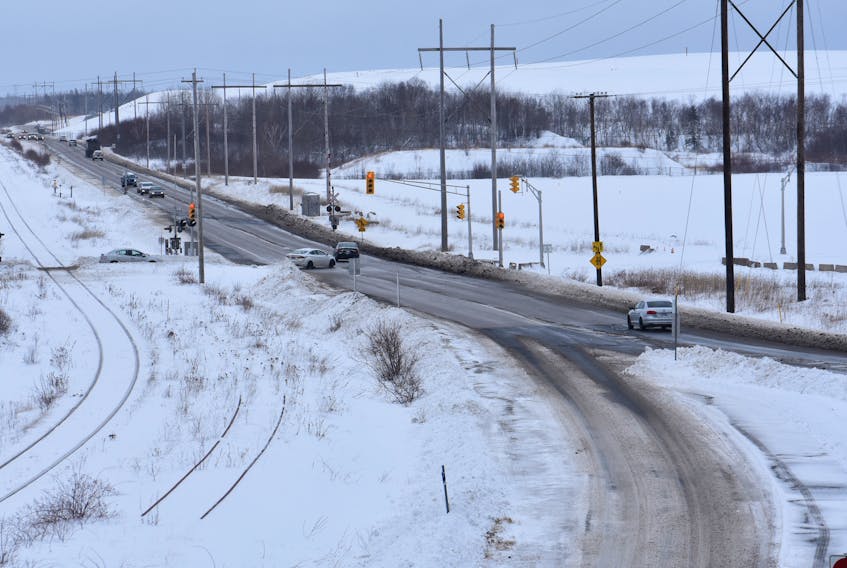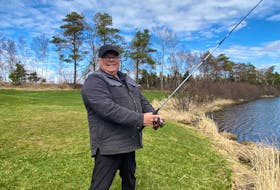SYDNEY, N.S. — Sydney’s so-called road to nowhere may have the green light, but the alternative route to Whitney Pier is unlikely to open before spring.
A month after the province’s Nova Scotia Lands agency was given permission to remove a set of unused railway tracks that prevented the opening of the seven-year-old virgin road, the Cape Breton Post has learned that the concrete jersey barriers blocking off the unnamed road will probably remain in place until at least March 31.
NS Lands executive director Donnie Burke said significant work has already been completed at the Sydney Ports Access Road and Lingan Road intersection, where the “road to nowhere” comes to an end. It’s been that way since it was constructed in 2013 as part of the 10-year, $400-million project to remediate the Sydney tar ponds and its associated sites.
“We got authority to remove the tracks, we’ve had engineers in assessing the intersection and traffic flow, there’s a new curb and gutter and a lots of the measuring and ordering would have been done over the past month,” said Burke, whose agency had to negotiate with the U.S.-based Genesee & Wyoming’s Cape Breton and Central Nova Scotia Railway, owners of the derelict tracks that have sat unused for more than two decades.
“The last step now, considering the whole intersection, is the actual structures of the traffic lights — that is, what the stanchions will look like, how far the mast has to be, and also to determine the new specifications of designing them now that there is a whole new road alignment because the old lights couldn’t be put back up the same way.”
Despite the delay, Cape Breton Regional Municipality Coun. Jim MacLeod, who represents the district that includes the road to nowhere, says he’s just happy the thoroughfare will finally be used after seven years of sitting idle.
“We’ve moved forward on this and the CBRM has already completed the related asphalt and concrete work — I’m very pleased it is finally moving ahead,” said the veteran municipal councillor, who has long championed the cause to open the road that runs through the site of the former coke ovens that once served the Sydney steel plant.
The road runs parallel and to the east of Victoria Road. Once open, it will offer motorists an alternative route between Whitney Pier and the Ashby area of Sydney. It will also give firefighters based at Sydney Station No. 2 on Victoria Road quicker access to the SPAR and Lingan Road.
Once the remaining infrastructure work is complete, Burke said the soon-to-be four-way intersection will require a final assessment before it’s opened to traffic.
“We’ll have to have a followup assessment completed by a second consultant who deals directly with signals and lighting,” said Burke.
“So, they’ll come in and do an audit of all the work to make sure everything meets the intent of design and then we’ll be good to start pushing cars across there.”
RELATED:









